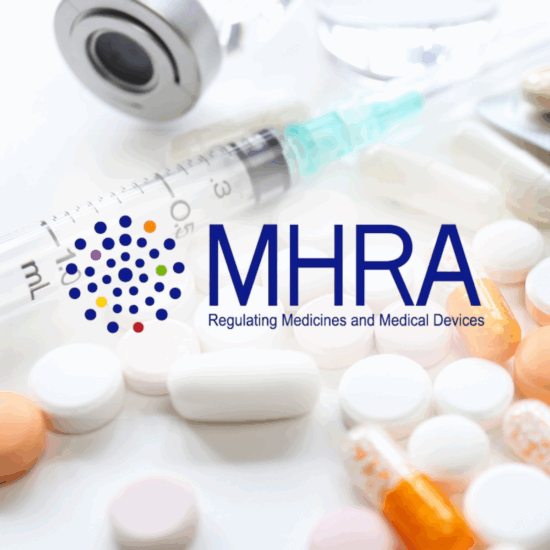New UK Clinical Trials Regulation 2024: What You Need to Know
Published May 29, 2025
Published 16th February 2024

Despite the improvements brought by the Paediatric Regulation EC 1901/2006, treating paediatric patients remains challenging for clinicians due to the lesser availability of knowledge and drugs for paediatric conditions.
Thanks to the Paediatric Regulation EC 1901/2006, sponsors must develop a Paediatric Investigation Plan (PIP) before applying for marketing authorisation in the EU. However, conducting traditional clinical studies in this population is not always feasible due to practical challenges (e.g., limited population, lack of patient autonomy) and ethical considerations (i.e., the need not to subject children to unnecessary treatment or unforeseen adverse events).
Fortunately, some of these difficulties can be minimised using extrapolation methods, e.g., to facilitate decision-making, optimise study designs and improve data analysis.
Extrapolation can be defined as making inferences by extending information and conclusions from a source to a target population. The populations may differ by their characteristics (age, gender, etc.), their conditions (e.g., different conditions with partial similarity in disease manifestations) or their treatment (e.g., use of data from studies with a product from the same pharmacological class).
The extrapolation typically anticipates the relationship between dose, exposure, pharmacodynamic effects, and clinical responses.
Before conducting an extrapolation plan, the sponsor will collate the existing information about the disease, the drug pharmacology and the clinical responses to the treatment. For a PIP, differences between the adult population and the paediatric groups that can affect the treatment effects or the evolution of the disease must be considered.
Where there are data available to establish that a relationship in the source population will apply in the paediatric population or that a factor will have a negligible or no effect on the treatment response, this can be incorporated into the extrapolation concept and will not need to be addressed in the PIP extrapolation plan.
However, where there are gaps in knowledge, assumptions will be made and investigated in an extrapolation plan before the expectations on the paediatric population’s treatment effects can be considered a sound basis for regulatory decision-making.
The assumptions dictate the objective(s) and methodological approaches for the tests and trials required to draw inferences in the paediatric population.
We assume a similar therapeutic effect with the same PK exposure if the extrapolation of efficacy is possible between adults and children, based on achieving similar PK between the two populations.
We can also assume a similar therapeutic effect with the same PD value if the extrapolation of efficacy is possible between adults and children, based on achieving similar PD (e.g., biomarker) between the two populations.
Clinical PK and PD data will almost always be necessary for extrapolation from adults to the paediatric population.
Replacement of PK or PK/PD studies with model predictions is only acceptable if PK or PK/PD can be predicted with great certainty based on well-understood physiology, ontogeny and compound properties.
It may also be necessary to conduct therapeutic studies to collect efficacy and safety data in the paediatric population, e.g., to confirm that the magnitude of the effect on efficacy outcomes is consistent with the expectations from the extrapolation plan.
It is not recommended to make an extrapolation plan when the efficacy and/or safety of the product can be impacted by the patients’ neurodevelopmental stages (e.g., growth, sexual and cognitive development).
Modelling is the science of using mathematical language to describe and quantify a system. Simulation uses these models to make quantitative predictions, i.e., extrapolate the available data.
Modelling and simulation is a group of methods used to conduct extrapolation.
The model integrates all the relevant and reliable data available (nonclinical, clinical, literature) to answer the study objective(s). Using this model to simulate the dose-exposure-response relationships, the sponsor can test the assumptions made to fill in the gaps in knowledge. Future experimental outcomes can be predicted (including treatment outcome, dosing requirements and covariate effects) and optimised (testing different experimental designs).
Physiologically-based pharmacokinetics (PBPK) models are mechanistic models that predict absorption, distribution, metabolism and excretion processes. Currently, the primary purpose of PBPK models in PIPs is to support initial dose selection in paediatric clinical trials.
Physiological differences between adults and different paediatric age groups can be incorporated into the PBPK model to evaluate the PK variations. However, these models are limited as they don’t consider the drug mechanism, disease, or progression.
The population approach enables us to overcome these limitations and to explore drug-disease interactions and the role of covariates in PK, PD and treatment outcomes.
In population models (popPK), the data from different treatment cohorts and/or studies are pooled together. This is particularly useful in conditions where the number of paediatric patients is limited. PopPK models allow the testing of clinical scenarios in virtual patients, i.e., without exposing children to any risk, and eliminate the bias due to non-linear PK and complex PK/PD relationships when assessing the covariate effects on the model parameters.
Modelling & simulation, including population models, are also used to optimise the design of clinical studies. PopPK and popPK/PD models can support dose selection, sampling times, treatment duration, and population size. They can support prediction and extrapolation of data across different age groups, dosing regimens and formulation or delivery forms. Moreover, population models may enable the extrapolation of long-term efficacy and safety based on short-term PK and treatment response data.
Clinical trial simulation (CTS) is another M&S tool for study design optimisation. Clinical trial simulation enables the assessment of the impact of a range of design characteristics on the study’s statistical power to detect a treatment effect before exposing patients to the experimental drug.
A CTS can be used to characterise the interaction between the drug and the disease, enabling the assessment of disease-modifying effects, dose selection and covariate effects. In conjunction with a trial model, these interactions can be assessed by considering uncertainty and trial design factors, including the implication of different statistical methods for data analysis.
CTS’s main advantages are the possibility of predicting trial performance and identifying potential study and protocol design limitations before its implementation.
The EMA PIP, a scientific document template, has distinct sections for extrapolations and M&S.
The extrapolation section explains the concept, i.e., whether a relationship established in the source population can apply in the paediatric population, whether M&S will be required, and which clinical data will be used.
In the M&S section, the applicant will describe and justify their model. The information may include the model type and its parameters, the source of clinical data used for the simulation, the M&S software, etc.
Therefore, although complementary, these two sections provide different information that will become critical binding elements.
Refer to our blog post on Paediatric Investigation Plan (PIP) Applications: Steps to Success.
Although it is not always appropriate, regulatory Agencies encourage sponsors to use extrapolation to support their paediatric development. It can often be used as a data analysis tool to support decision-making and study design. It is particularly useful when the target population is limited, such as rare diseases.
Different types of models exist. They all have in common that they require reliable and relevant data for the simulation to be meaningful. Therefore, it is essential to plan the clinical development so that the data collected can support paediatric development using M&S.
The DLRC group brings together regulatory experts worldwide who can support your company in developing your clinical strategy according to the regulatory requirements. We can assist you with all aspects of your paediatric development, paediatric plan applications and regulatory affairs.
Get in touch to discuss your needs with DLRC via the link below.

Published May 29, 2025

Published May 29, 2025

Published May 01, 2025

Published Apr 28, 2025

Published Apr 25, 2025

Published Apr 11, 2025

Published Mar 31, 2025

Published Mar 27, 2025

Published Mar 27, 2025